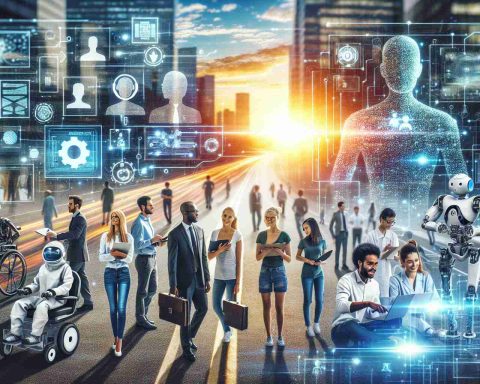Key figures from the American technology sector recently came together at the White House to address the burgeoning field of artificial intelligence. Among those present were prominent executives such as Jensen Huang of NVIDIA and Brad Smith from Microsoft. The gathering, which also included U.S. Secretary of Commerce Gina Raimondo and National Security Advisor Jake Sullivan, focused on the crucial development of AI infrastructure.
Following the meeting, an official statement was issued by the White House announcing the formation of a workgroup dedicated to AI data centers. This group will work to synchronize policies across various government departments to better support innovation and development in AI technologies. The Department of Energy is also set to establish a team aimed at fostering the advancement of AI data centers.
In discussions prior to the meeting, a White House spokesperson emphasized the commitment of President Biden and Vice President Kamala Harris to establishing data centers in the U.S. They are keen to ensure that this technological development occurs responsibly, thereby reinforcing America’s leadership stance in the AI domain.
Huang highlighted the ongoing industrial revolution, stressing the importance of anticipating future demands and challenges. The rapid pace of growth in this sector may necessitate enhanced collaboration between public and private enterprises. Key attendees also included leaders from OpenAI, Anthropic, and Google, all participating in this pivotal dialogue about the future of AI.
Government and Tech Leaders Unite to Shape AI Infrastructure: A New Era of Collaboration
In an unprecedented move, U.S. government officials and leaders from the technology sector are coming together to create a robust infrastructure for artificial intelligence (AI). This collaboration reflects the growing recognition of AI’s transformative potential in various industries, from healthcare to finance, and fuels discussions about how to harness this technology effectively and ethically.
Key Questions and Answers:
1. What are the primary goals of the new workgroup dedicated to AI data centers?
– The workgroup aims to streamline policies across federal agencies to promote innovation in AI technologies while ensuring that the infrastructure established aligns with national interests and ethical standards.
2. How will the collaboration between government and tech companies influence the development of AI?
– By fostering dialogue and cooperation, this partnership is expected to lead to the creation of guidelines and frameworks that prioritize safety, security, and ethical considerations in AI applications.
3. What challenges might arise from this collaboration?
– One of the key challenges is ensuring that AI technologies are developed responsibly and equitably, addressing potential biases and privacy concerns. Additionally, there may be disagreements about regulations and standards between the public and private sectors.
Advantages and Disadvantages of Government and Tech Collaboration:
Advantages:
– Enhanced Innovation: Collaborative efforts can lead to the development of cutting-edge AI solutions that benefit society.
– Standardization: A unified approach towards AI infrastructure can create standards that enhance safety and effectiveness.
– Resource Sharing: The combined expertise and resources of both sectors can accelerate advancements in AI research and implementation.
Disadvantages:
– Potential for Over-Regulation: Excessive government oversight could stifle innovation and lead to regulatory compliance burdens for tech companies.
– Ethical Concerns: Ensuring that the technology developed is ethical and does not perpetuate existing biases is a significant concern.
– Focus on Big Players: Smaller companies may struggle to have their voices heard in discussions dominated by larger firms.
Controversies and Challenges:
As the government takes an active role in shaping AI infrastructure, concerns arise regarding privacy, data security, and ethical implications of AI technologies. The collection and management of large datasets necessary for training AI models raise significant questions about consent and data ownership. Furthermore, the issue of accountability in instances where AI systems may cause harm or are misused is contentious and requires careful deliberation.
Another challenge is the inherent speed of technological advancement compared to the pace of policy-making. As AI technologies evolve rapidly, governmental regulations can lag, raising fears that AI systems could outpace ethical guidelines and regulatory frameworks.
Looking Ahead:
As discussions progress, key stakeholders must address these challenges head-on. This collaboration may set the stage for groundbreaking developments in AI, fostering an environment where innovation aligns with public welfare.
For more information on the intersection of technology and government policy, visit the following links: C-SPAN, TechCrunch, and Forbes.

















